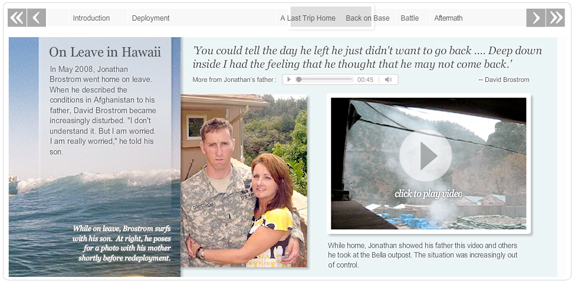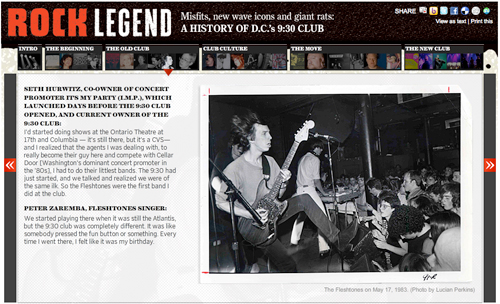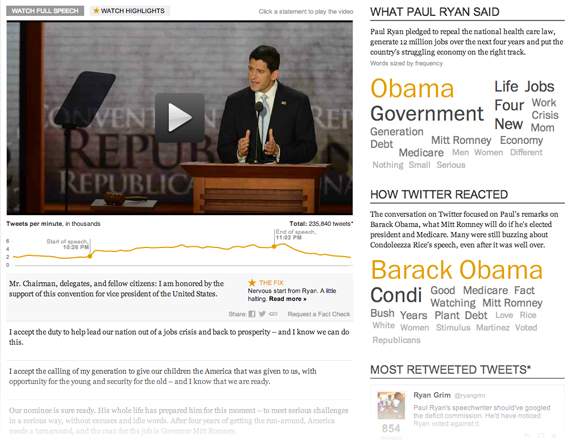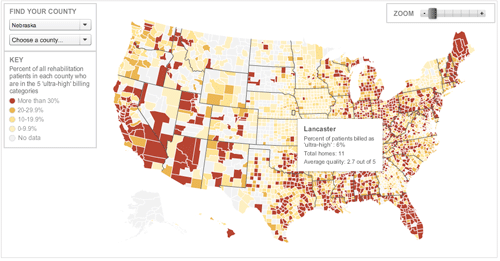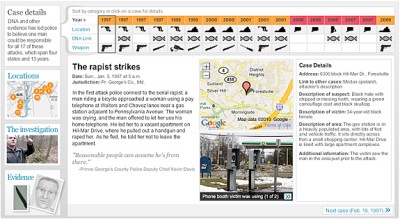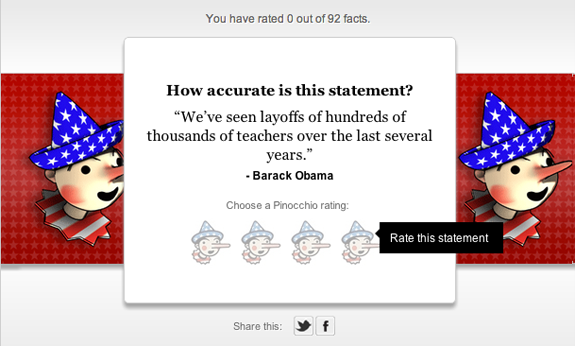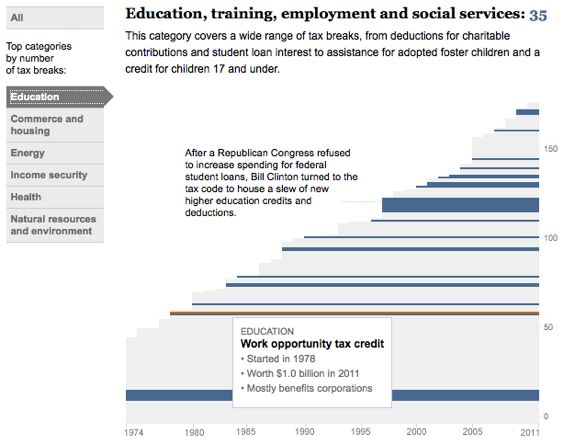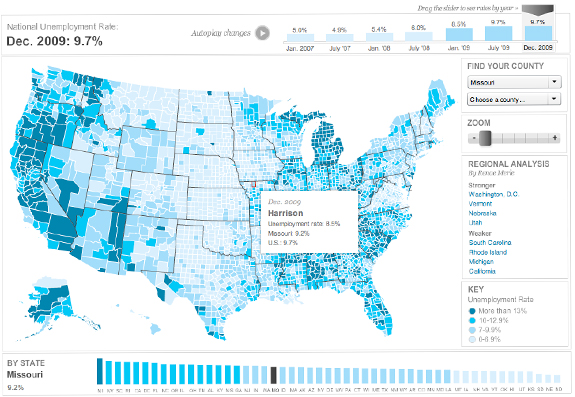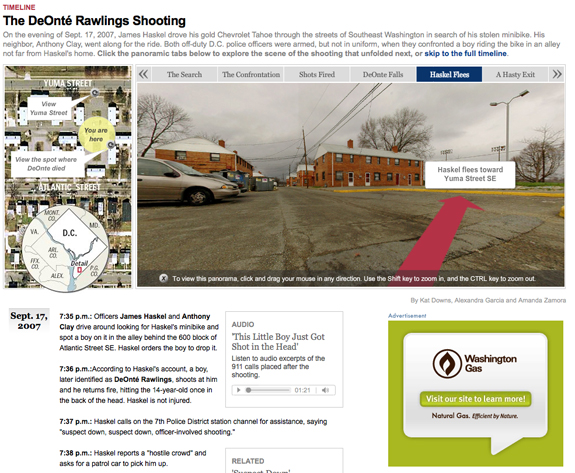Published in The Washington Post, October 3, 2009
For this story about a battle in a remote part of Afghanistan that had greater implications for the war there, reporter Greg Jaffe came to us with a ton of found videos, photo and audio. I came up with the idea to do a horizontal pane timeline that would allow us to integrate all the media into one experience instead of breaking it up into several pieces. I built this horizontal scrolling interface, which has video and audio players embedded in it. I also designed and laid out all the photography and text in the piece. I think it has a simple and easy user interface, which drives interaction with the multimedia items inside the project.
Role: Design, programming
Tools used: Flash/ActionScript 3.0 with audio and video players, Adobe Photoshop, CSS
Awards: Bronze, Malofiej 18; WHNPA Eyes of History 2010: 2nd place for Best Multimedia Package (Simple); SND Quarterly (Winter 2009)
